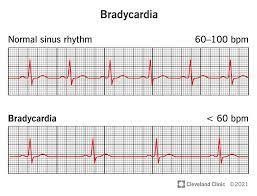A nurse is providing teaching for a client who has a new prescription for promethazine tablets. Which of the following client statements indicates an understanding of the teaching?
"This medication can cause diarrhea
"The medication can cause increased salivation
"This medication can cause pupil constriction"
"The medication can cause drowsiness
The Correct Answer is D
The client statement that indicates an understanding of the teaching is: "The medication can cause drowsiness."
Promethazine is an antihistamine medication commonly used to treat various conditions, such as allergies, motion sickness, and nausea. One of the most common side effects of promethazine is drowsiness or sedation. It has a significant sedative effect, and it is often used to induce sleep or manage insomnia in some cases.
Let's go through the other options:
A. "This medication can cause diarrhea": Diarrhea is not a common side effect of promethazine. While promethazine can cause certain gastrointestinal side effects like constipation or upset stomach, diarrhea is not typically associated with its use.
B. "The medication can cause increased salivation": Increased salivation is not a common side effect of promethazine. While some antihistamines can cause dry mouth, which is the opposite of increased salivation, promethazine does not usually cause excessive salivation.
C. "This medication can cause pupil constriction": Pupil constriction (miosis) is a potential side effect of some medications, but it is not commonly associated with promethazine. Promethazine is more likely to cause pupil dilation (mydriasis) rather than constriction.
Nursing Test Bank
Naxlex Comprehensive Predictor Exams
Related Questions
Correct Answer is ["0.12"]
Explanation
To calculate the rate at which the IV pump should be set to deliver dopamine, we need to determine the total amount of dopamine in the infusion and divide it by the desired dose per minute.
Given:
Dopamine concentration: 400 mg in 250 mL
Desired dose: 5 mcg/kg/min
Patient weight: 220 lb
First, we need to convert the patient's weight from pounds to kilograms:
220 lb ÷ 2.2 = 100 kg
Next, we need to calculate the total amount of dopamine needed per minute:
5 mcg/kg/min × 100 kg = 500 mcg/min
Now, we need to convert the dopamine dose from mcg to mg:
500 mcg/min ÷ 1000 = 0.5 mg/min
To determine the infusion rate in mL/hr, we divide the dose in mg/min by the dopamine concentration in the infusion solution:
0.5 mg/min ÷ 250 mL = 0.002 mL/min
Finally, we convert the infusion rate from mL/min to mL/hr by multiplying by 60:
0.002 mL/min × 60 min = 0.12 mL/hr
Therefore, the nurse should set the IV pump to deliver 0.12 mL/hr.
Correct Answer is D
Explanation
Oxybutynin is an anticholinergic medication commonly used to treat urinary incontinence. One of the adverse effects of anticholinergic medications is the potential for bradycardia, which refers to a slower than normal heart rate. Anticholinergic medications can inhibit the effects of acetylcholine, a neurotransmitter responsible for regulating various bodily functions, including heart rate. Therefore, it is important to assess the client for signs of bradycardia after an unintended higher dose of oxybutynin.
Increased salivation (A) is not an expected adverse effect of oxybutynin. In fact, anticholinergic medications like oxybutynin often have the opposite effect, causing dry mouth and reduced salivation.
Hyperthermia (B) is not a typical adverse effect of oxybutynin. It is more commonly associated with other conditions or medications.
Urinary incontinence (C) is the condition that oxybutynin is intended to treat. It is not an adverse effect but rather the therapeutic effect of the medication.

Whether you are a student looking to ace your exams or a practicing nurse seeking to enhance your expertise , our nursing education contents will empower you with the confidence and competence to make a difference in the lives of patients and become a respected leader in the healthcare field.
Visit Naxlex, invest in your future and unlock endless possibilities with our unparalleled nursing education contents today
Report Wrong Answer on the Current Question
Do you disagree with the answer? If yes, what is your expected answer? Explain.
Kindly be descriptive with the issue you are facing.
